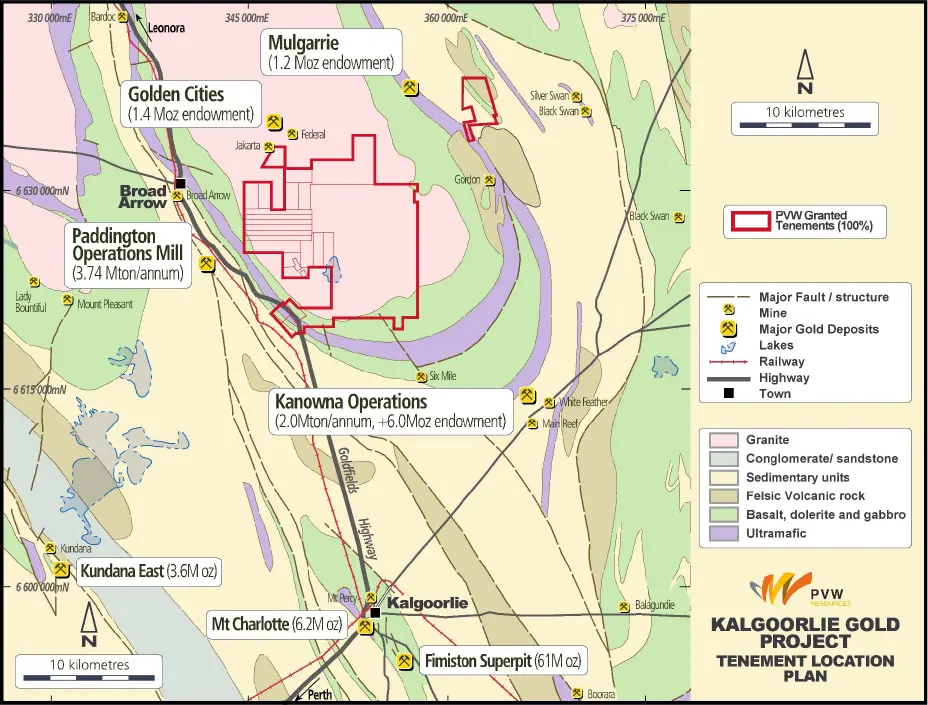Kalgoorlie Region
Project summary and regional context

Kalgoorlie Project and tenement location
-
The area sits 30 km North of the town of Kalgoorlie in Western Australia near the Broad Arrow Townsite and the Norton Gold Paddington operations. The Kalgoorlie area provides strong infrastructure to support ongoing exploration activities.
-
The project includes three main exploration packages: Black Flag, King of the West, and Pappy. Exploration activities aim to locate gold mineralisation by systematically refining key target areas and generating new targets.
-
Tenements sit within the Boorara Domains, a division of the Kalgoorlie Terrane, a major component of the Eastern Goldfields Superterrane. Terranes and Domains are bounded by interconnecting major fault systems, these fault systems are the basis of PVW’s exploration programme.
-
Exploration drilling within the areas is surprisingly sparse and superficial given the location within 30 km of Kalgoorlie and 15 km from Kanowna. Mineralisation occurring close to the areas is varied and demonstrates the importance of understanding local geological controls.
See Announcements and Presentations for the latest updates on the Kalgoorlie Project.
©2022 PVW RESOURCES
